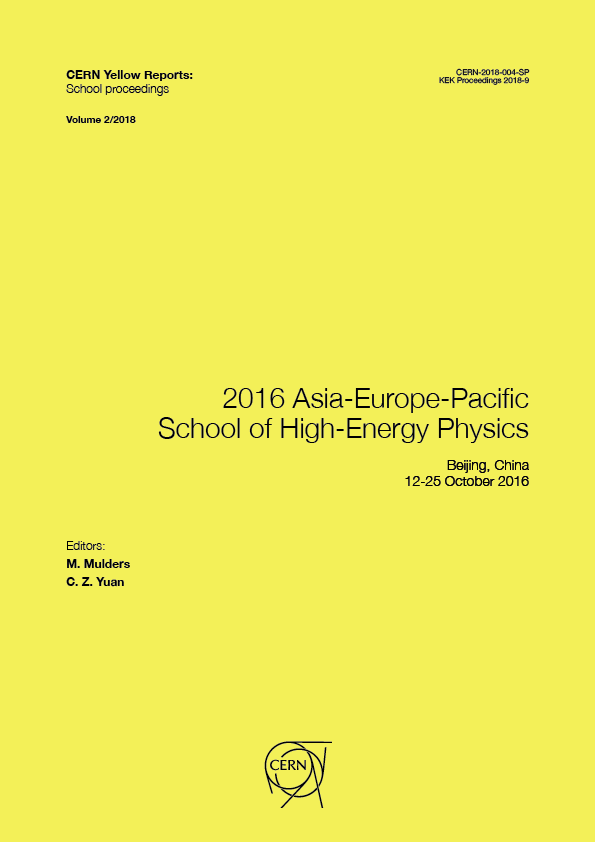Basics of QCD for the LHC: pp → H + X as a case study
DOI:
https://doi.org/10.23730/CYRSP-2018-002.41Keywords:
Lectures, quantum chromodynamics, effective field theory, parton showers, perturbation theory, Monte Carlo.Abstract
Quantum Chromo Dynamics (QCD) provides the theoretical framework for any study of TeV scale physics at LHC. Being familiar with the basic concepts and techniques of QCD is therefore a must for any high-energy physicist. In these notes we consider Higgs production via gluon fusion as an example on how accurate and flexible predictions can be obtained in perturbative QCD. We start by illustrating how to calculate the total cross section at the leading order (yet one loop) in the strong coupling α S and go through the details of the nextto-leading order calculation eventually highlighting the limitations of fixedorder predictions at the parton level. Finally, we briefly discuss how more exclusive (and practical) predictions can be obtained through matching/merging fixed-order results with parton showers.Downloads
Published
2018-12-19
Issue
Section
Submission to the proceedings of AEPSHEP 2016
License
Authors who publish with this publication agree to the following terms:
- CERN retains copyright and publishes the work licensed under the Creative Commons Attribution License 4.0 that allows others to share the work with an acknowledgement of the work's authorship and initial publication in this series.
- Authors are able to enter into separate, additional contractual arrangements for distribution of the published version of the work (e.g., post it to an institutional repository or publish it in a book), with an acknowledgement of its initial publication in this series.
- Authors are permitted and encouraged to post their work online (e.g., in institutional repositories or on their website) prior to and during the submission process, as it can lead to productive exchanges, as well as earlier and greater citation of published work (See The Effect of Open Access).

